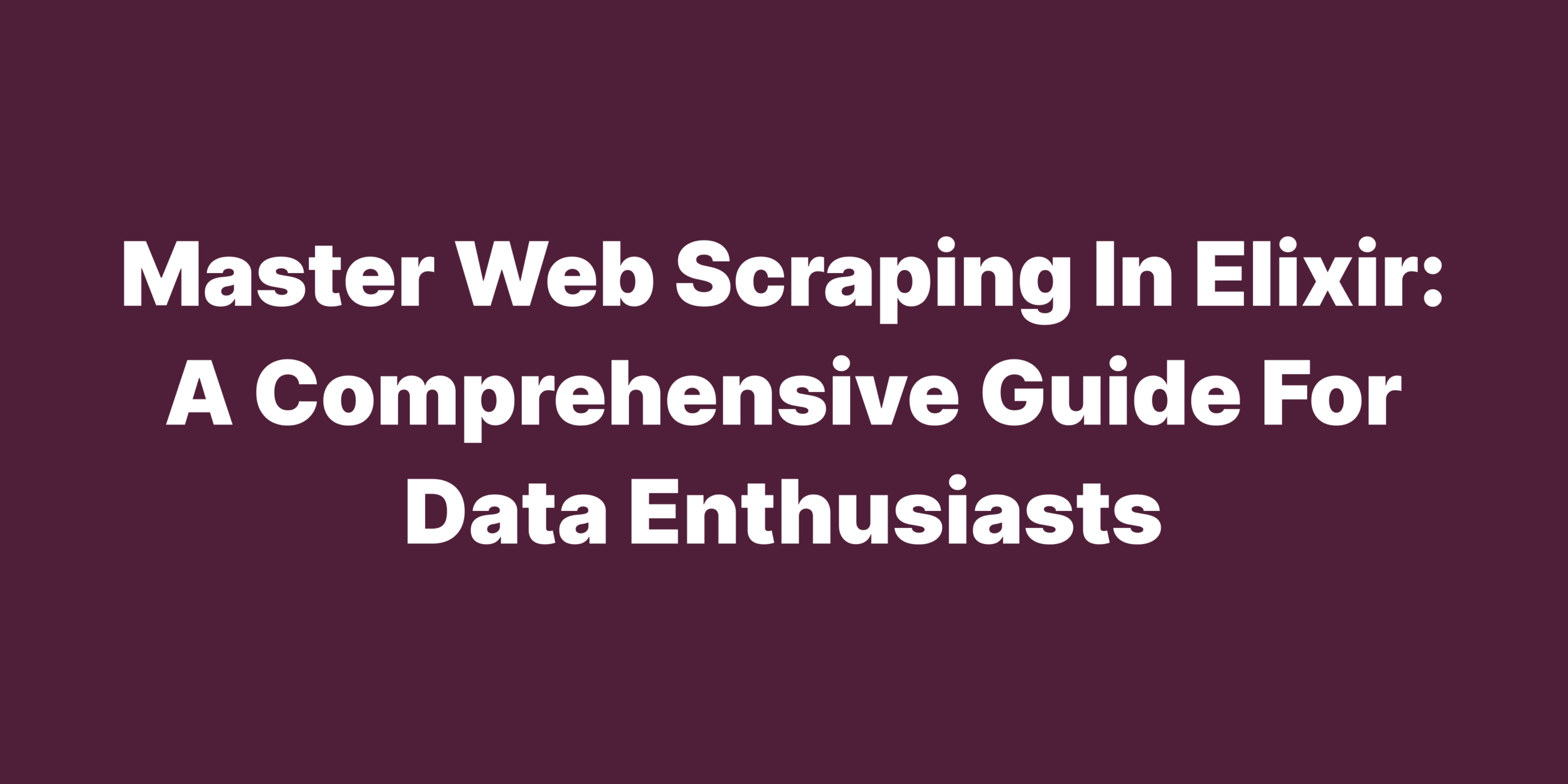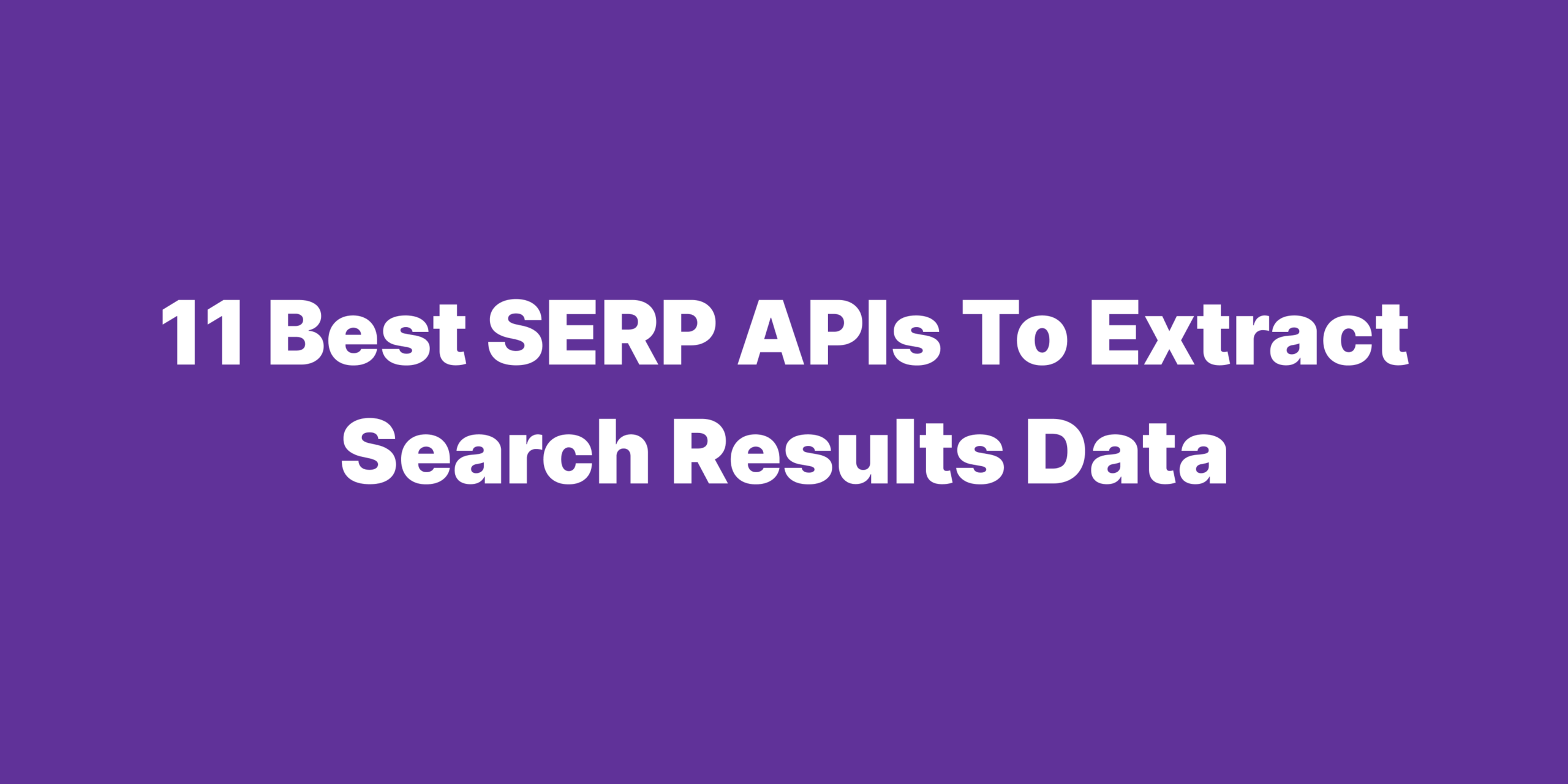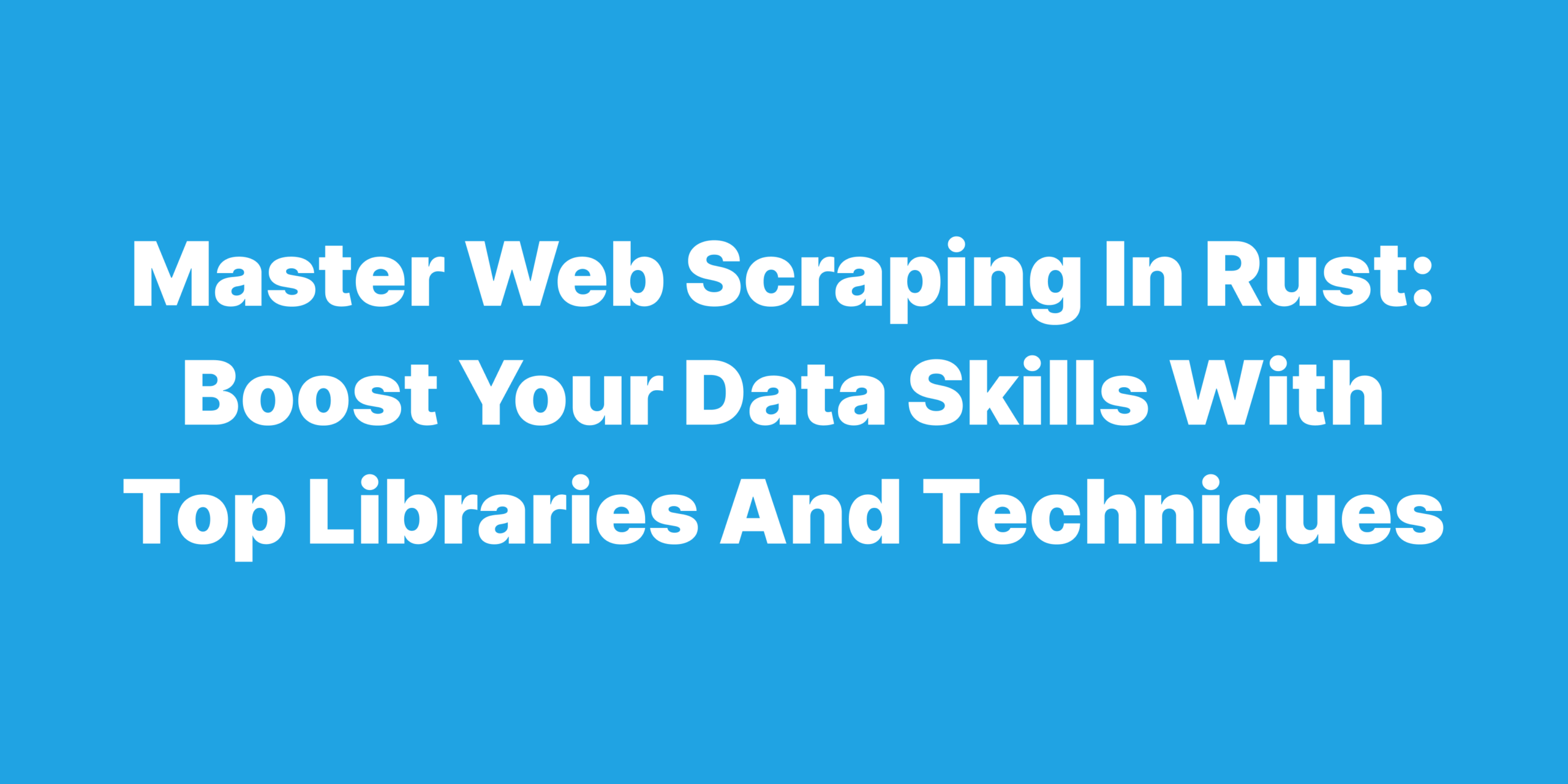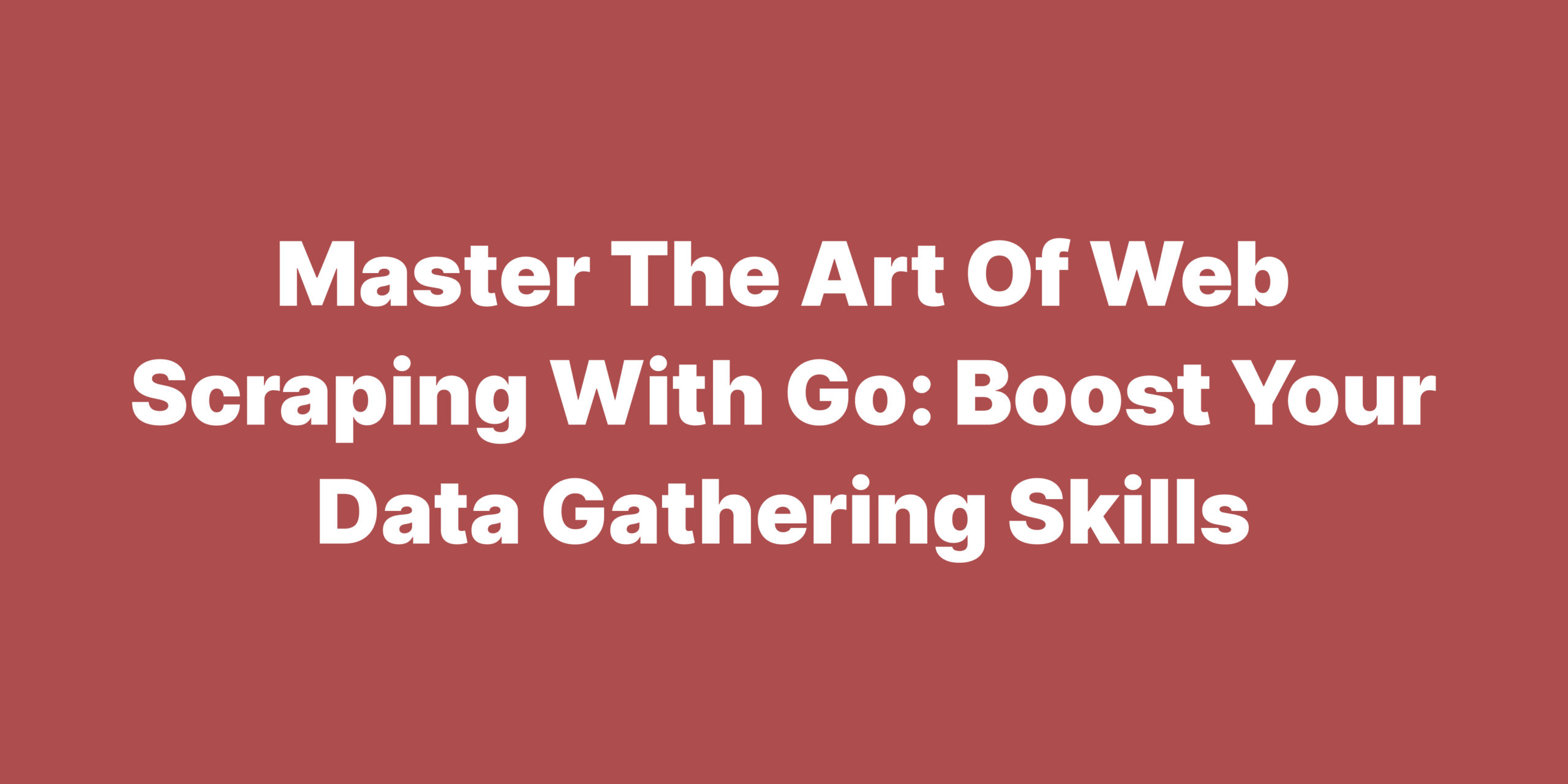In today’s data-driven world, the ability to efficiently gather and analyze information from the web is invaluable, making web scraping API techniques a cornerstone for data enthusiasts. Web scraping, the automated process of extracting data from websites, is pivotal in transforming vast amounts of web data into actionable insights. This article embarks on a journey through the world of web scraping with Elixir, a dynamic, functional language designed for scalability and maintainability. We’ll start with the basics of web scraping and its significance in data analysis. Moving forward, we’ll discuss how to kickstart your web scraping projects in Elixir, pinpoint HTML objects by their IDs, and introduce the top libraries that make Elixir an excellent choice for web scraping tasks. Additionally, we’ll walk you through creating your Elixir-based web scraper to collect page HTML, and offer strategies for effectively parsing HTML code. This guide aims to be your comprehensive resource for mastering web scraping in Elixir, and enhancing your data analysis capabilities.
Embarking on Your Web Scraping Journey with Elixir
Elixir, a dynamic and functional programming language built on the reliable and concurrent Erlang virtual machine (BEAM), is an excellent choice for web scraping projects. Its inherent scalability, fault-tolerance, and concurrency capabilities make it well-suited for handling multiple web scraping tasks simultaneously. Additionally, Elixir’s concise syntax and powerful pattern-matching features allow for clean and efficient code, making the process of extracting and parsing data from websites more manageable.
Before diving into web scraping with Elixir, it’s essential to set up your development environment. First, ensure you have Elixir and Erlang installed on your system. Next, familiarize yourself with Mix, the build tool and task runner for Elixir, which will help you manage your project’s dependencies and tasks. Once your environment is set up, you can start exploring various libraries available for web scraping in Elixir, such as HTTPoison for making HTTP requests and Floki for parsing and navigating HTML documents.
Understanding the basic concepts of web scraping is crucial for a successful data extraction process. Web scraping in Elixir, like in any other language, typically involves three key steps: sending an HTTP request to the target URL, parsing the HTML response, and extracting the desired data. To perform these tasks, you will need to familiarize yourself with the structure of HTML documents, how to send HTTP requests, and how to navigate the Document Object Model (DOM) tree. Armed with this knowledge, you’ll be well-prepared to tackle web scraping projects with confidence and efficiency.
Efficiently Extracting Data by Identifying HTML Objects by ID
HTML objects are the fundamental building blocks of a web page, consisting of elements such as headings, paragraphs, images, and links. Understanding how to work with HTML objects is essential in web scraping because these objects contain the data you want to extract. Each HTML object has a unique identifier, called an ID, which makes it easy to locate specific elements within a web page’s DOM structure. Identifying elements by their IDs is a crucial skill in web scraping, as it allows you to target and extract data from specific parts of a web page accurately and efficiently.
To identify HTML objects by ID in Elixir, you can use a library like Floki, which is designed for parsing and navigating HTML documents. Floki’s simple and intuitive API makes it easy to query HTML elements using CSS selectors, including selecting elements by their ID. To do this, simply pass a CSS selector string that includes the ID (prefixed by a hash symbol, ‘#’) to the Floki function that searches the HTML document.
For example, suppose you want to extract the text content of a heading element with the ID ‘main-title’ from an HTML document. You could use Floki like this: Floki.find(html_document, "#main-title") |> Floki.text(). This code snippet first searches the html_document for the element with the ID ‘main-title’ and then extracts its text content. By leveraging the power of Elixir and libraries like Floki, you can quickly and efficiently identify and extract data from HTML objects by their IDs, accelerating your web scraping projects and enhancing your data analysis capabilities.
Supercharge Your Web Scraping Projects with Top Elixir Libraries
When it comes to web scraping in Elixir, a variety of powerful libraries are available to simplify and streamline the process. These libraries offer a range of functionalities, from making HTTP requests and parsing HTML documents to handling cookies and managing redirects. By leveraging these libraries, you can build efficient and robust web scrapers that can tackle even the most complex data extraction tasks. In the next sections, we will explore five of the best libraries for web scraping in Elixir, examining their features, strengths, and weaknesses, and providing insights into which library is best suited for your specific project requirements.
HTTPoison
HTTPoison is a popular Elixir library for making HTTP requests, providing a simple and easy-to-use API.
Pros:
- Clean and intuitive API for making HTTP requests
- Supports various HTTP methods, including GET, POST, PUT, and DELETE
- Allows for custom request headers and options
Cons:
- Limited to HTTP requests, requiring an additional library for HTML parsing
- Lacks advanced features such as cookie handling or session management
- Relatively slower compared to other libraries when handling large-scale web scraping projects
Floki
Floki is an Elixir library designed for parsing and navigating HTML documents, offering a convenient way to query and extract data from HTML content.
Pros:
- Simple and powerful API for querying HTML elements using CSS selectors
- Supports various methods to extract data, such as attributes, text, or inner HTML
- Efficient HTML parsing and manipulation capabilities
Cons:
- Focuses on HTML parsing and navigation, requiring a separate library for making HTTP requests
- Lacks built-in support for handling JavaScript or AJAX content
- May have a steeper learning curve for users unfamiliar with CSS selectors
Crawler
Crawler is a high-level web scraping library for Elixir that provides an integrated solution for crawling and extracting data from websites.
Pros:
- Combines HTTP requests and HTML parsing functionalities in a single library
- Supports concurrent and asynchronous crawling, enhancing performance in large-scale projects
- Allows for custom extraction logic through user-defined callback functions
Cons:
- Less flexible compared to using separate libraries for HTTP requests and HTML parsing
- Requires more setup and configuration compared to more straightforward libraries
- Can be more challenging to debug due to its high-level abstraction
Meeseeks
Meeseeks is a versatile Elixir library for parsing and querying XML and HTML documents using CSS or XPath selectors.
Pros:
- Supports both CSS and XPath selectors for querying elements
- Offers powerful and flexible data extraction capabilities
- Provides a fast and efficient parsing engine for large HTML documents
Cons:
- Exclusively focused on parsing, requiring another library for HTTP requests
- Relatively steeper learning curve for users new to CSS or XPath selectors
- May have a more complex API compared to simpler libraries like Floki
Hound
Hound is an Elixir library for browser automation and web scraping, designed to work with browser drivers such as Selenium WebDriver or PhantomJS.
Pros:
- Enables interaction with JavaScript and AJAX content through browser automation
- Provides a high-level API for navigating and extracting data from websites
- Supports various browser drivers for different testing and scraping scenarios
Cons:
- Requires additional setup and configuration for browser drivers
- Slower compared to libraries that only handle HTTP requests and HTML parsing
- May be overkill for simpler web scraping tasks that do not require browser automation
Constructing Your Custom Web Scraper in Elixir: A Step-by-Step Guide
Building a web scraper in Elixir involves combining the power of Elixir’s language features and the functionality of web scraping libraries. A web scraper typically sends HTTP requests, retrieves HTML content, and extracts the desired data from the HTML structure. By using Elixir’s pattern matching, concurrency features, and the right libraries, you can create efficient and scalable web scrapers tailored to your specific needs.
To build a web scraper in Elixir, follow these steps:
- Choose the appropriate libraries for your project, such as HTTPoison for making HTTP requests and Floki for parsing and navigating HTML content.
- Create a new Elixir project using Mix and add the required libraries to your project’s dependencies.
- Write a function that sends an HTTP request to the target URL and retrieves the HTML content using the chosen HTTP library.
- Parse the HTML content with the selected parsing library and extract the desired data by querying HTML elements based on CSS selectors or other identification methods.
- Process the extracted data as needed, such as cleaning, formatting, or storing it in a database.
Here’s a simple example of a web scraper in Elixir that extracts the titles of the top news articles from a hypothetical news website:
defmodule NewsScraper do
use HTTPoison.Base
alias HTTPoison.Response
def fetch_titles(url) do
{:ok, response} = get(url)
html_content = Response.body(response)
titles = Floki.find(html_content, ".top-news-title") |> Floki.text()
titles
end
end
url = "https://example.com/news"
top_news_titles = NewsScraper.fetch_titles(url)
IO.inspect(top_news_titles)
In this example, we use the HTTPoison library to send an HTTP request and retrieve the HTML content from the target URL. We then parse the HTML content with Floki to find all elements with the class ‘top-news-title’ and extract their text. The result is a list of top news article titles, ready for further processing or analysis.
Deciphering the Web: Parsing HTML Code with Elixir Libraries
Parsing HTML code is the process of converting raw HTML content into a structured format that can be easily navigated and queried. In web scraping, parsing is essential for extracting the desired data from a web page’s HTML structure. By transforming the HTML content into a tree-like structure, known as the Document Object Model (DOM), you can efficiently locate and extract specific elements or attributes.
Elixir offers various libraries designed for parsing and navigating HTML content, making it easy to extract data from web pages during your web scraping projects. Some popular libraries include Floki, Meeseeks, and MochiWeb. These libraries provide powerful APIs for querying HTML elements using CSS selectors or XPath expressions, allowing you to target and extract specific parts of the HTML structure with precision and ease.
To demonstrate parsing HTML code with an Elixir library, let’s use Floki to extract all the links from a simple HTML document:
ehtml_content = """
<html>
<body>
<a href="https://example.com/page1">Page 1</a>
<a href="https://example.com/page2">Page 2</a>
<a href="https://example.com/page3">Page 3</a>
</body>
</html>
"""
links = Floki.find(html_content, "a[href]") |> Enum.map(fn element ->
Floki.attribute(element, "href")
end)
IO.inspect(links)
In this example, we first define an HTML document containing three links. We then use Floki to find all ‘a’ elements with the ‘href’ attribute and extract the attribute values using the Floki.attribute/2 function. The result is a list of the URLs from the links, ready for further processing or navigation. By leveraging Elixir libraries like Floki, you can easily parse and extract data from HTML content, simplifying your web scraping tasks and enhancing your data analysis capabilities.
Unlocking the Web’s Potential: Mastering Web Scraping in Elixir
Throughout this article, we have explored the fascinating world of web scraping in Elixir, delving into its importance in data analysis and the various tools and techniques available to make the process more efficient. From identifying HTML objects by ID and selecting the best Elixir libraries to building your custom web scraper and parsing HTML code, we have covered essential topics to help you gain a solid understanding of web scraping in Elixir.
As data continues to drive decision-making in various industries, web scraping has become an invaluable skill. Elixir, with its powerful features and extensive libraries, makes it an excellent choice for developing efficient and scalable web scraping solutions. So, why not give it a try? Sign up for a free trial of Scrape Network today, and let us handle all the proxies, captchas, and ensure you don’t get blocked while you focus on extracting valuable insights from the web. Embrace the power of web scraping and elevate your data analysis skills to new heights!
Frequently Asked Questions
What should be considered when selecting an Elixir library for web scraping?
When choosing an Elixir library for web scraping, consider factors such as the library’s features and capabilities, ease of use, performance, and community support. It’s essential to select a library that aligns with your specific project requirements and offers a suitable balance between simplicity and functionality.
What distinguishes the top five Elixir libraries for web scraping?
The key differences between the top five Elixir libraries for web scraping lie in their primary focus, features, and ease of use. Some libraries, like HTTPoison, focus on making HTTP requests, while others like Floki specialize in HTML parsing. Libraries like Crawler provide an integrated solution for both tasks. Each library has its strengths and weaknesses, making it crucial to evaluate their features and compatibility with your project needs.
How can the latest web scraping library developments and best practices be followed?
To stay updated on the latest developments in web scraping libraries and best practices, follow the official repositories and documentation of the libraries you use, subscribe to relevant newsletters or blogs, join online forums or communities, and attend webinars or conferences in the field. Engaging with the web scraping community will help you stay informed and learn from others’ experiences.
What benefits can be gained from using the Scrape Network Scraping API?
Leveraging the Scrape Network Scraping API can save you time and effort by handling various web scraping challenges, such as proxies, captchas, and avoiding blocks. By using the API, you can focus on extracting valuable insights from web data without worrying about the technical complexities of web scraping. Sign up now and receive 5,000 free API calls to experience the benefits of the Scrape Network Scraping API firsthand!






